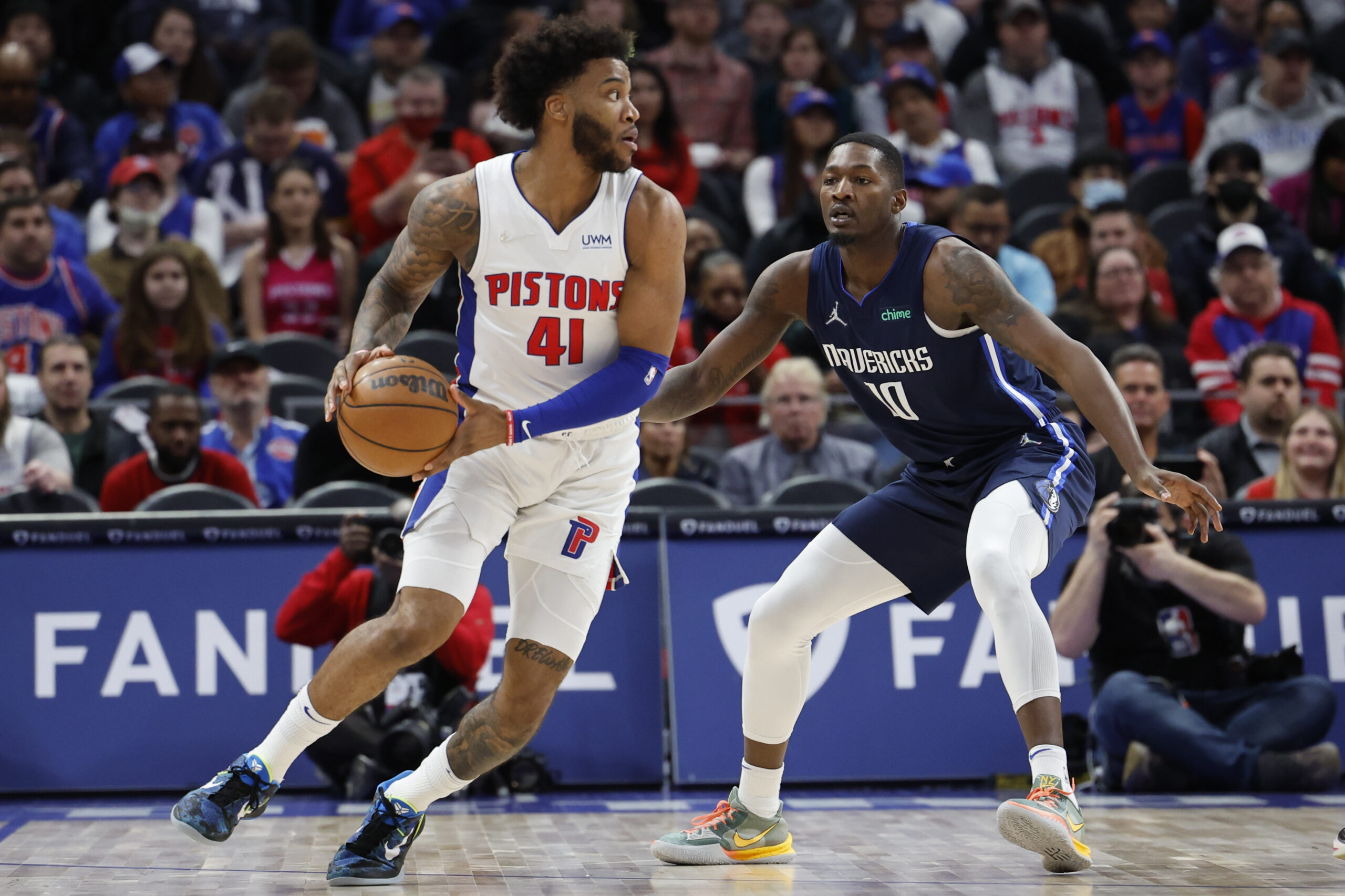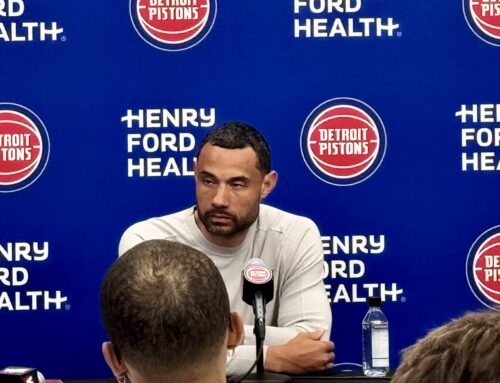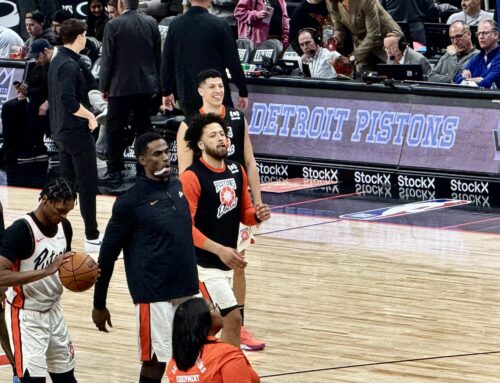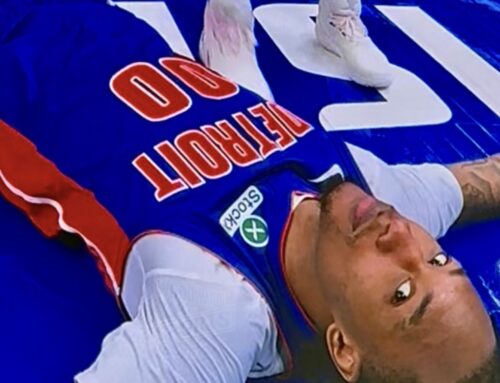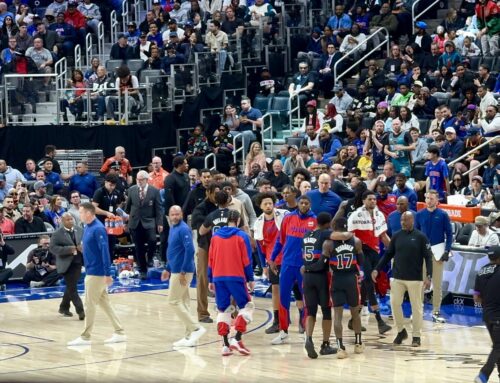The Detroit Pistons have a nearly complete starting lineup.
The consensus generally agrees Cade Cunningham and Jaden Ivey will be Detroit’s starting backcourt. For obvious reasons, Cunningham is a guarantee to start at point guard; he is the face of the franchise. While Ivey is likely to go through a lot of growing pains early on, head coach Dwane Casey has not shied away from starting rookies in the past. In the frontcourt, third-year guys Saddiq Bey and Isaiah Stewart are locks to make the starting lineup as well.
That leaves one glaring hole in Detroit’s starting lineup.
With the departure of Jerami Grant via trade with the Portland Trail Blazers, the Pistons have a void to fill at the starting power forward position.
With the draft and free agency in Detroit’s rearview mirror, the front office has provided options for the coaching staff to replace Grant. It is unlikely that whoever fills the hole left by Grant will provide the same 19.2 points per game production, but they will be a young developmental piece that fits the timeline of the Pistons’ rebuild.
Isaiah Stewart has received looks at power forward
During the Las Vegas Summer League, the Pistons experimented with Stewart playing the power forward position.
Stewart has the versatility to make the switch from center to power forward. The 21-year-old big man is not a springy rim-runner, but he offers a lot of potential as a floor spacer.
On paper, Stewart’s three-point shooting is nothing to write home about. He shot 33.3 percent from beyond the arc as a rookie and 32.6 percent in year two. However, he showed a lot of progress late in the 2021-22 season and during Summer League.
Stewart shot 54.5 percent from three-point range in his final 21 games of the season, albeit on only one attempt per game. In the final eight games of the season, he shot 61.1 percent on 2.3 three-point attempts per game. During Summer League, Stewart shot five-for-nine from outside the arc in two games.
If Stewart continues to develop his three-point shot, he makes a lot of sense as Detroit’s starting power forward. Stewart offers a lot of switchability on the defensive end of the court. He held his own while being switched on to the likes of Luka Dončić. Sliding Stewart down to power forward opens him up to playing a switch-heavy help-side role while allowing the Pistons to start a more traditional rim protector at the center spot. Down the line, a Stewart and Jalen Duren pairing could be a stout defensive big man duo.
The Pistons could easily slide Saddiq Bey to the four
Bey has good enough size to play power forward. At 6-7 and 215 pounds, Bey has a somewhat similar build to other fours like Tobias Harris and Jae Crowder.
Like Stewart, Bey would not offer much as a lob threat at the four spot, but he would help the team maximize their floor spacing heading into next season. After shooting 38 percent from beyond the arc as a rookie, Bey declined to a less inspiring 34.6 percent this past season. However, the Villanova product bounced back late in the season as he shot 37.3 percent from three-point range in the final 12 games of the season.
The Pistons ranked 29th in the NBA in three-point shooting percentage. Sliding Bey up to the four allows Detroit to add another solid shooter to the lineup at the small forward spot. Either of Alec Burks or Isaiah Livers would do just fine.
Burks shot 40.4 percent from beyond the arc with the Knicks this past season. At 6-6 and 214 pounds, Burks could easily fill in as the starting three in Detroit’s lineup. During Summer League, Livers made a great case to make the Pistons’ starting lineup. Livers is a three-and-D guy through and through. He shot 42.2 percent from three-point range in 19 games as a rookie. Both guys are solid options. Burks is a better playmaker, but Livers offers more in terms of catch-and-shoot consistency and defensive instincts.
Theoretically, Detroit’s starting lineup will be solid from beyond the arc next season. Cunningham has good shot mechanics and shot well in college, but he only shot 31.4 percent from three-point range as a rookie. He should be better this season, but he has to prove it. Ivey shot 35.8 percent from beyond the arc at Purdue, but he has consistency issues. Stewart has shown flashes of floor spacing potential, but those flashes came in a small sample size. Starting Bey at the four with either Burks or Livers at the three guarantees two bonafide three-point shooters in the starting lineup.
Isaiah Livers can play the four too
If both Livers and Bey start, they are interchangeable at the four. Livers stands at 6-7 and 230 pounds. He has the size to play power forward just as Bey does. Without reiterating everything already said about Livers, all the positives he brings as a potential starting small forward, he brings as a potential starting power forward.
Kelly Olynyk is a darkhorse candidate to start at Power Forward for the Pistons
Out of all of Detroit’s options to start at power forward, Kelly Olynyk is probably the least likely candidate to fill the void left by Grant.
Olynyk missed the majority of the 2021-22 season. He only appeared in 40 games, including one start. He shot 33.6 percent from beyond the arc, just one season removed from shooting 39.2 percent with the Houston Rockets. Olynyk posted career lows in both defensive rating (112) and defensive win shares (0.8). Olynyk was not terrible; he was in fact exactly what the Pistons paid him to be: a serviceable bench big.
Olynyk can play power forward. He has done it in the past, and he has performed well in that role in the past. But, he is better served to play that role off the bench rather than as a starter. He is older, for one. The 31-year-old is entering his 10th season, and with the Pistons in the midst of a rebuild, playing the young guys is currently a priority. He is also a bit slower than Detroit’s other options to start at the power forward spot.
Do not expect Olynyk to win the starting spot, but if he is forced into it due to injuries, he will be serviceable as a spot starter.
Marvin Bagley III offers a springy lob threat at the starting four
The Pistons acquired Marvin Bagley III at the 2022 trade deadline. In 18 games with Detroit, Bagley resurrected his career, averaging 14.6 points on 55.5 percent shooting from the floor.
Bagley turned his solid play into a new contract with the team. Detroit signed the 23-year-old to a three-year, $37 million deal this offseason.
He is a springy rim runner for Cunningham to lob the ball to out of pick-and-rolls, and he has a solid post-game. As a floor spacer, Bagley has potential, but he is not quite there yet. He is just one season removed from shooting 34.3 percent from beyond the arc; however, Bagley regressed in 2021-22, as he shot 23.7 percent from three-point range. If he can add a consistent three-point shot to his arsenal, Bagley would be a very dangerous offensive player.
Defensively, Bagley is someone you try to hide. He posted a -0.9 defensive box plus/minus with Detroit last season. He is not much of a shot blocker, and he can get exposed when forced onto the perimeter.
It makes sense to play Bagley next to Stewart in Detroit’s starting lineup. If Stewart can maximize his potential as a floor spacer, Bagley could effectively play the five on offense and the four on defense. Stewart would help hide Bagley’s defensive deficiencies as well.
Ultimately, it is likely that most of these guys spend some time at the starting power forward spot this season. The guy starting at the four to open up the season could easily find himself in an entirely different role to end it. The Pistons have options with who fills the hole left by Grant. With the team in the midst of its rebuild, options are a good thing.
(Featured Image Credit: Rick Osentoski-USA TODAY Sports)

